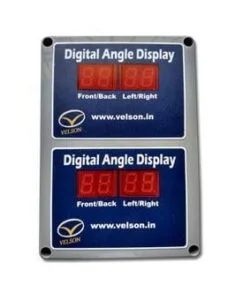In the realm of engineering, construction, and various industrial applications, precise measurements and angles play a pivotal role. One of the critical aspects of these fields is understanding and calculating angles accurately. This is where the digital inclinometer comes into play. In this article, we will delve into the world of the digital inclinometer, exploring its types, working principles, functions, benefits, and its significance in calculating the derth angle.
Types of Digital Inclinometers
Digital inclinometers come in various types, each designed to suit specific needs and industries. The primary types include:
- Single-Axis Digital Inclinometer: These inclinometers measure angles in a single plane, making them ideal for applications where you only need to measure one axis, such as pitch or roll.
- Dual-Axis Digital Inclinometer: Dual-axis inclinometers measure angles in two planes, typically both pitch and roll simultaneously. They are widely used in applications that require two-axis measurements, such as heavy machinery and automotive alignment.
- Tri-Axis Digital Inclinometer: Tri-axis inclinometers measure angles in three planes, including pitch, roll, and yaw. These are commonly used in aerospace and defense applications where precise 3D orientation is crucial.

Working Principle of Digital Inclinometer
Digital angle display employ various technologies to measure angles accurately. The most common methods include MEMS (Micro-Electro-Mechanical Systems) sensors, gyroscope sensors, and accelerometers. These sensors detect changes in gravitational forces and angular velocity to calculate the inclination angle accurately.
Function of Digital Inclinometer
The primary function of a digital inclinometer is to measure angles or inclinations relative to the Earth’s gravitational field. It provides real-time angle data, which is crucial for tasks like:
- Alignment: Ensuring equipment, structures, or components are level or at a specific angle.
- Monitoring: Tracking the movement or stability of structures or machinery.
- Navigation: Determining the orientation of vehicles, drones, or robotics.
- Safety: Preventing accidents by monitoring angles in high-risk environments.
Benefits of Digital Inclinometer
Digital angle display offer a range of benefits that make them indispensable in various industries:
- Accuracy: Digital inclinometers provide highly accurate angle measurements, crucial for precise applications.
- Ease of Use: They are user-friendly, with digital displays that make reading and recording measurements straightforward.
- Portability: Many digital angle display are compact and portable, allowing for easy transportation and use on-site.
- Real-time Data: These instruments provide real-time data, enabling immediate decision-making.
- Durability: Most digital inclinometers are built to withstand harsh environmental conditions, making them suitable for rugged industries.
Dearth Angle Calculation Using Digital Inclinometers
Now, let’s discuss the significance of digital angle display in calculating the derth angle. The “derth angle” is a term used in construction and engineering to describe the angle between two intersecting surfaces, often in excavation or slope analysis. This angle is crucial for ensuring stability and safety in these applications.
Digital inclinometers are particularly useful in calculating the derth angle because they provide precise angle measurements. By placing a digital angle display on the surfaces of interest, you can easily determine the angle at which they intersect. This information is vital for designing slopes, ensuring proper excavation angles, and preventing potential disasters caused by unstable surfaces.
Digital Inclinometer Price in India
The price of digital inclinometers varies depending on their type, brand, and features. In India, you can find a wide range of options to fit different budgets. Basic single-axis digital inclinometers can start at a few thousand rupees, while more advanced dual-axis and tri-axis models may cost more. It’s essential to consider your specific needs and the required level of accuracy when choosing a digital Angle Display.
In conclusion, digital inclinometers are indispensable tools in various industries, offering accurate angle measurements that are crucial for safety, stability, and precision. Whether you’re working in construction, engineering, or any field that requires precise angle calculations, a digital angle display is an invaluable instrument that can save time, reduce errors, and ensure the success of your projects.
